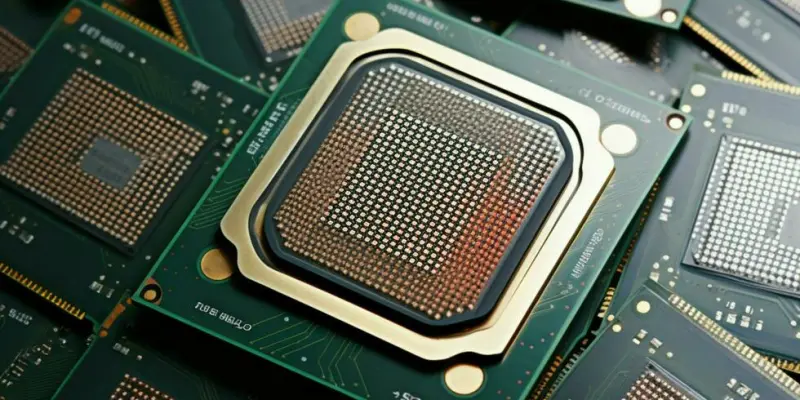The unveiling of E-Series graphics processing units (GPUs) by Imagination Technologies signifies a remarkable shift in edge AI technology, bringing notable enhancements to graphics and artificial intelligence (AI) processing capabilities closer to data origins rather than relying solely on centralized cloud solutions. This innovation introduces a groundbreaking approach wherein AI components are directly integrated within the GPU itself, signaling a transformative change in system design. This paradigm shift is poised to redefine applications across various industries, with automotive leading the charge in leveraging these cutting-edge advancements. The emphasis on adaptability and efficiency marks a new era in edge computing, setting the foundation for future developments within this domain.
Revolutionary Edge Computing Approach
Imagination Technologies’ E-Series GPUs prioritize exceptional graphics performance and robust AI workload management, reflecting their intent to cater to niche markets such as automotive. The scalability of these GPUs, ranging from two to 200 tera operations per second (TOPS) using integer 8-bit (INT8) or floating-point 8-bit (FP8) formats, positions them effectively to handle diverse AI applications requiring varying computational power levels. Vice President Kristof Beets emphasizes the distinctiveness of the E-Series design, underscoring Imagination Technologies’ departure from conventional market offerings. This approach facilitates diverse applications, ensuring that these GPUs are equipped to meet specific industrial demands while maintaining superior performance.
Innovative Technologies Driving Change
Two pioneering technologies, Neural Cores and Burst Processors, are critical to the E-Series’ ability to transform edge system design. Neural Cores are engineered to dramatically enhance AI and computational workloads while offering scalability up to 200 TOPS (INT8/FP8). They provide substantial room for advancements in edge applications, elevating the potential benefits across various sectors. Meanwhile, Burst Processors introduce a groundbreaking solution aimed at improving average power efficiency by 35%—a feat achieved through reducing pipeline depth and minimizing internal data movement within the GPU. These technological strides redefine conventional approaches to edge computing, enabling more power-efficient operations essential for modern devices.
Integration and Efficiency
The trend toward merging AI processing within GPUs exemplifies a broader movement toward integrated and efficient system design in edge computing. Industry insights, such as those from Phil Solis, research director at IDC, emphasize the evolution of power-efficient GPUs capable of supporting both graphics and AI workloads. The E-Series offers state-of-the-art graphics capabilities, including support for ray tracing, alongside enhanced power-efficient low precision AI operations integrated into the GPU core. This strategy not only provides optimal power efficiency but also enables developers to leverage Neural Cores for extensive AI number format support. Such flexibility presents opportunities for performance optimization, making it easier to tailor designs to specific needs regarding accuracy, performance, and power consumption.
Future-Proof Solutions and Programmability
Imagination Technologies’ approach addresses the industry’s recurring emphasis on future-ready solutions that adapt to evolving AI, compute, and graphics workloads. By ensuring that E-Series GPUs remain highly programmable, they facilitate versatile and long-lasting device designs that adapt seamlessly to changing technological landscapes. The GPUs integrate AI acceleration within the broader GPU and heterogeneous computing software ecosystems, offering developers access to an array of tools and APIs like OpenCL, oneAPI, Apache TVM, and LiteRT. These resources enable developers to effectively deploy their workloads onto Neural Cores, acknowledging the necessity for adaptable and resilient computing solutions in meeting evolving demands.
Power-Efficiency and Multitasking
Imagination Technologies’ reputation for energy-efficient designs is reinforced through the E-Series’ introduction, with the PowerVR GPU architecture benefiting from innovative Burst Processors technology that enhances power efficiency. This improvement is crucial for devices catering to low power AI applications, where power efficiency is paramount. Modern devices require processors adept at handling diverse graphics and AI workloads concurrently. Imagination Technologies addresses the need for multitasking, expanding on capabilities from previous generations by doubling the number of supported hardware-backed, zero-overhead virtual machines to sixteen. With comprehensive quality of service (QoS) support, these advancements ensure that multiple graphics and AI workloads can be processed simultaneously, accommodating complex and dynamic computing demands.
Anticipated Impact Across Industries
Imagination Technologies’ E-Series GPUs are designed to offer superb graphics performance while excelling in managing AI workloads, specifically targeting niche areas like the automotive industry. These GPUs exhibit remarkable scalability, delivering operations ranging from two to 200 tera operations per second (TOPS). They are capable of handling various AI applications through the use of either integer 8-bit (INT8) or floating-point 8-bit (FP8) formats, which cater to different levels of computational requirements. Vice President Kristof Beets highlights the unique architecture of the E-Series, which signifies Imagination Technologies’ shift away from traditional market paradigms. This innovative direction allows for a broad range of applications, ensuring the GPUs are well-suited to meet the specific demands of various industries. The E-Series offers not only flexibility and adaptability in processing needs but also sustains high performance standards, making them a competitive player in fulfilling industry-specific requirements.

